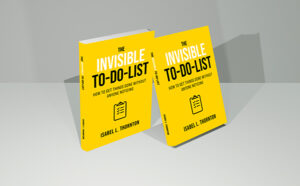
We live in an era of one-click solutions, same-day delivery, voice-activated everything, and AI that anticipates your needs before you do. Life has never been more comfortable—but ironically, many people have never felt more anxious, fragile, or easily overwhelmed.
What gives?
In her transformative book, Habit Hacks for Happiness: How to build habits that actually serve you, Tess Alder introduces a powerful concept: comfort inflation—and how it’s slowly draining our ability to handle life’s inevitable challenges.
What Is Comfort Inflation?
Comfort inflation is the gradual process by which our expectations for ease increase while our tolerance for discomfort decreases.
Think about it:
- A five-minute delivery delay can spark frustration.
- A slow-loading app feels like a system failure.
- Having to call customer service instead of chatting with a bot? Instant dread.
What was once a luxury (think hot water on demand or same-day shipping) quickly becomes the new standard. And when that standard isn’t met—even slightly—we don’t just feel inconvenienced; we feel distressed.
Alder writes:
“The easier life becomes, the more intolerant we grow of anything that isn’t easy.”
Why This Is a Problem
Every time you avoid a small challenge because it feels inconvenient, you send your brain a signal: “Discomfort is dangerous.”
Over time, this creates:
- Lower resilience to stress
- Heightened reactivity to small setbacks
- Decreased problem-solving capacity
- Increased dependence on external ease
The result? A generation of people who are technically more “comfortable” than ever—and simultaneously less equipped to handle friction, frustration, or failure.
Comfort Isn’t Bad… Until It’s Expected
There’s nothing wrong with enjoying comfort. The problem is when comfort becomes entitlement.
You’ve probably noticed this shift in your own life:
- Walking a few blocks in the rain now feels extreme.
- Waiting in line without pulling out your phone feels unbearable.
- Doing anything “the long way” seems unnecessary.
But here’s the truth: mental toughness isn’t built when things are easy—it’s built when they’re not.
How to Fight Back: Rebuild Your Friction Tolerance
To reverse comfort inflation, you don’t need to throw away all your modern conveniences. You just need to reintroduce intentional friction into your daily life.
Here’s how:
1. Choose the Slightly Harder Option Once a Day
Examples:
- Take the stairs instead of the elevator.
- Cook instead of ordering in.
- Walk or bike to the store instead of driving.
It’s not about punishment. It’s about training your tolerance for small difficulties.
2. Practice “Productive Inconvenience”
Do one thing each day that mildly inconveniences you, but builds strength.
Ideas:
- Take a cold shower for 30 seconds.
- Don’t use GPS for a local route.
- Wait five extra minutes before opening your phone in the morning.
These micro-acts build grit, delayed gratification, and self-command.
3. Reflect on Small Struggles as Strength Training
Instead of complaining about traffic or a long line, reframe it:
“This is me training for patience.”
“This is where resilience builds.”
Reframing discomfort as a mental gym repurposes annoyance into self-growth.
4. Celebrate Resistance, Not Just Relief
After doing something hard, don’t just move on. Acknowledge it:
- “I didn’t check my phone for 2 hours—progress.”
- “I had that hard conversation instead of avoiding it—courage.”
- “I walked through the rain without complaining—toughness.”
This recognition reinforces your identity as someone who can handle challenge—not just avoid it.
What Mental Toughness Actually Looks Like
Mental toughness isn’t about being emotionless or never struggling. It’s about:
- Delaying gratification
- Sticking with discomfort until a goal is met
- Recovering from failure with clarity, not collapse
- Regulating emotions in uncertain or inconvenient moments
These are trainable capacities. And comfort inflation is their enemy.
How Habit Formation Fits In
One of the most effective ways to push back against comfort inflation is through deliberate habit design. As Tess Alder outlines in Habit Hacks for Happiness, the key is to build habits that:
- Include resistance, not just convenience
- Grow your emotional flexibility
- Encourage patience, reflection, and delayed reward
For example:
- Instead of hitting snooze, build a 10-minute wake-up walk.
- Instead of passive scrolling, build a “boredom break” where you journal or sit with silence.
- Instead of avoiding social tension, build a habit of initiating one brave interaction per week.
You Are Stronger Than Your Comfort Zone
The more often you choose friction—when it’s safe and purposeful—the more your brain adapts. Your self-image shifts. You go from being “the kind of person who avoids” to “the kind of person who shows up anyway.”
Tess Alder reminds us:
“Every small inconvenience you face with purpose rewires your identity. You’re no longer ruled by ease—you’re led by courage.”
Ready to Reverse Comfort Inflation?
If you’re ready to build resilience in the face of modern comfort, Tess Alder’s Habit Hacks for Happiness: How to build habits that actually serve you is your essential guide. Inside, you’ll find real strategies to reclaim your edge, strengthen your mindset, and grow tougher—one simple habit at a time.
Because you weren’t made for constant comfort. You were made to rise.
Author

Alan Saunders is recognized for producing books on Artificial Intelligence and digital wellness, where playful narratives and clear insights are featured. Guidance for concerned parents hoping to safeguard children in an ever-evolving digital world is often emphasized in his writing. Complex AI concepts and practical safety measures are presented in a manner that blends intrigue with accessibility, allowing readers to explore technology’s possibilities while maintaining peace of mind.





